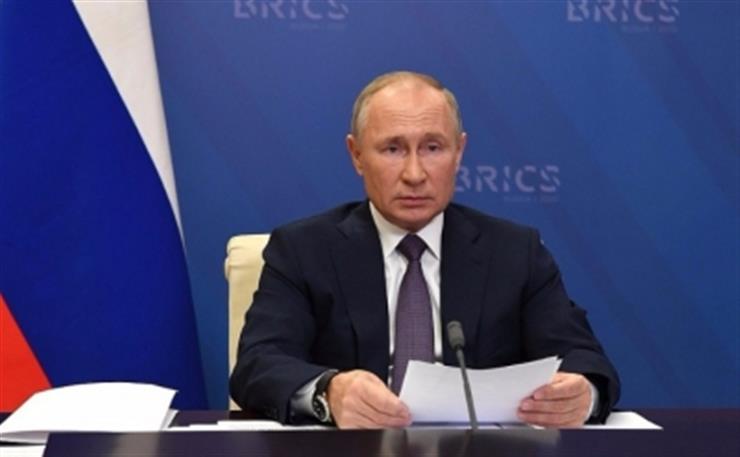The Russian strategy in the ongoing Ukraine crisis aims to prevent NATO from accepting Ukraine as a member. In reality, the clouds of war have thickened because of American and British attitude and detail.
The ongoing war of nerves and escalating tensions between the US and Russia over Ukraine has entered its fourth month after Russian forces began building up in areas near Ukraine’s border in November 2021, but the emergence of the conflict stretches into the year 2013 even back to 2008 when Ukraine applied for NATO membership.
Historically, Ukraine was part of the Soviet Union until 1991 and is currently a country between Russia and Europe. After 1991, even its polity seemed to be under Moscow’s influence, and its foreign policy has vacillated over the years between a pro-Russian and a pro-European Union.
But the current crisis owes its emergence to a fairly vital source of energy, namely natural gas, which neither the Russians nor the Americans have clearly mentioned in their talks or given as the reason for the conflict.
genesis of the crisis
If we try to decipher the crisis, we find that it is essentially about energy and how it will shape regional and global geopolitics. It is a fact that despite various global initiatives and campaigns to replace fossil fuels, we still do not have a viable source of sustainable technology that could provide cheap and reliable energy on a large scale worldwide. In this scenario, natural gas, the least polluting fossil fuel, becomes increasingly important as a viable source of energy.
Russia, the world’s largest exporter of natural gas, currently covers around 35 percent of Europe’s needs. In reality, the core of the current conflict lies in the Nord Stream 2 gas pipeline, which will connect Russian gas fields directly to Germany – Europe’s largest economy – which will lead to Western Europe becoming increasingly dependent on Russian gas.
In 2021, Germany, with 13.3 percent of its energy needs met by nuclear, needs Nord Stream 2 gas supply very quickly as it has committed to shutting down its nuclear power plants by the end of this year. Although Germany has invested heavily in the generation of wind and solar energy, it cannot yet be certain of their ultimate maturity. One of Germany’s largest trading partners, Russia, hopes to meet Germany’s energy needs through Nord Stream 2.
north current
Nord Stream is a maze of offshore natural gas pipelines in Europe, running under the Baltic Sea from Russia to Germany and then on to Western Europe. The Nord Stream projects were fiercely opposed by the United States and Ukraine, as well as other Central and Eastern European countries, over fears that the pipelines would increase Russia’s influence and bargaining power in Europe.
In the past, older Russian pipelines carrying gas to Europe passed through Ukraine. These gas pipelines generated revenue for Ukraine as they passed through their country. But Russia launched Nord Stream 1 in 2010, bypassing Ukraine through underground pipelines in the Baltic Sea, Nord Stream 2, which is due to come online mid-year, follows the same route and will double the gas supply through the network to 110 billion cubic meters per year .
In addition, US advisers believe that Vladimir Putin can use Nord Stream 2 as a strategic lever as it will control a vital energy source for many European countries. And this may affect American influence in the region.
Relations between Russia and Ukraine
Historically, Ukraine has always acted as a natural buffer zone between Russia and Europe. It has always given the Russian army enough lead time to prepare and strategize as enemy forces roam the vast steppes of Ukraine.
But even after the collapse of the former Soviet Union in 1991, Russia has attempted to control Ukraine by using puppet governments. But since the early 2010s, most regimes in power in Ukraine have shown pro-American tendencies. To warn such regimes, Putin annexed the Crimean region from Ukraine in 2014.
After the loss of Crimea, Ukraine applied more vigorously for NATO membership. Putin warned NATO that it would face consequences if Ukraine were accepted as a member.
The greatest danger, according to Russian generals, is that if Ukraine were to become a NATO member, NATO boots would be much closer to Russia.
In the last episode, after Russia started building its military presence on the Ukrainian border in November 2021, American and British reactions have been very hysterical, and for the last two months the American leadership has been predicting a Russian attack as soon as next week. but so far nothing has happened in this direction. Biden’s first statement on the conflict stated that the US would not allow Nord Stream 2 to operate if Russia invaded Ukraine. He also warned Russia of severe international sanctions.
To further complicate matters, meanwhile, Russian-backed rebel leaders in eastern Ukraine have announced plans for a military mobilization amid rising tensions. Denis Pushilin, leader of the self-proclaimed Donetsk People’s Republic, said he issued a decree on “general mobilization” on Saturday, while another separatist leader, Leonid Pasechnik, signed a similar decree for the self-proclaimed Lugansk People’s Republic.
But Putin knows full well that a full-scale invasion of Ukraine will be enormously costly for the US and Western European countries. No one could have predicted Putin’s next move, but the real intent behind all this reckless tactics is that he insists on keeping Ukraine as a buffer zone and could do whatever he can to thwart efforts by the US, British and Western European countries to absorb Ukraine into their country and the camp and influence of NATO. So far he has been able to achieve this through intimidation tactics rather than war, knowing also how costly this scenario would be for Russia. And if Germany were forced to cancel its Nord Stream 2 contract, the economic cost of war would be a financial catastrophe for Russia, which it is willing to avoid.
(Asad Mirza is a political commentator from New Delhi)




